
Pseudophakic late in-the-bag lens dislocation in a patient with pseudoexfoliation glaucoma. In this particular case, refixation or lens exchange is more complicated and challenging in the setting of trabeculectomy bleb is shown.
Pseudoexfoliation (PXF) syndrome is a condition in which fibrillar material is deposited in the anterior segment of the eye and other places throughout the body. It has complex inheritance, but is almost always associated with mutations in the LOXL1 gene. Individuals with this condition classically have exfoliative material visible along the pupillary margin and on the anterior lens capsule. The material on the lens capsule is often has a target-like appearance with distribution peripherally and centrally and an intervening clear space in the mid-periphery, presumably because the iris rubs the material off in this location as the pupil changes size. Other findings include "brown sugar" pigment in the trabecular meshwork, "moth-eaten" transillumination defects along the pupillary margin, and potentially zonular laxity which can lead to lens subluxation. It may be associated with open-angle glaucoma if the fibrillar material obstructs the trabecular meshwork and causes elevated intraocular pressure.
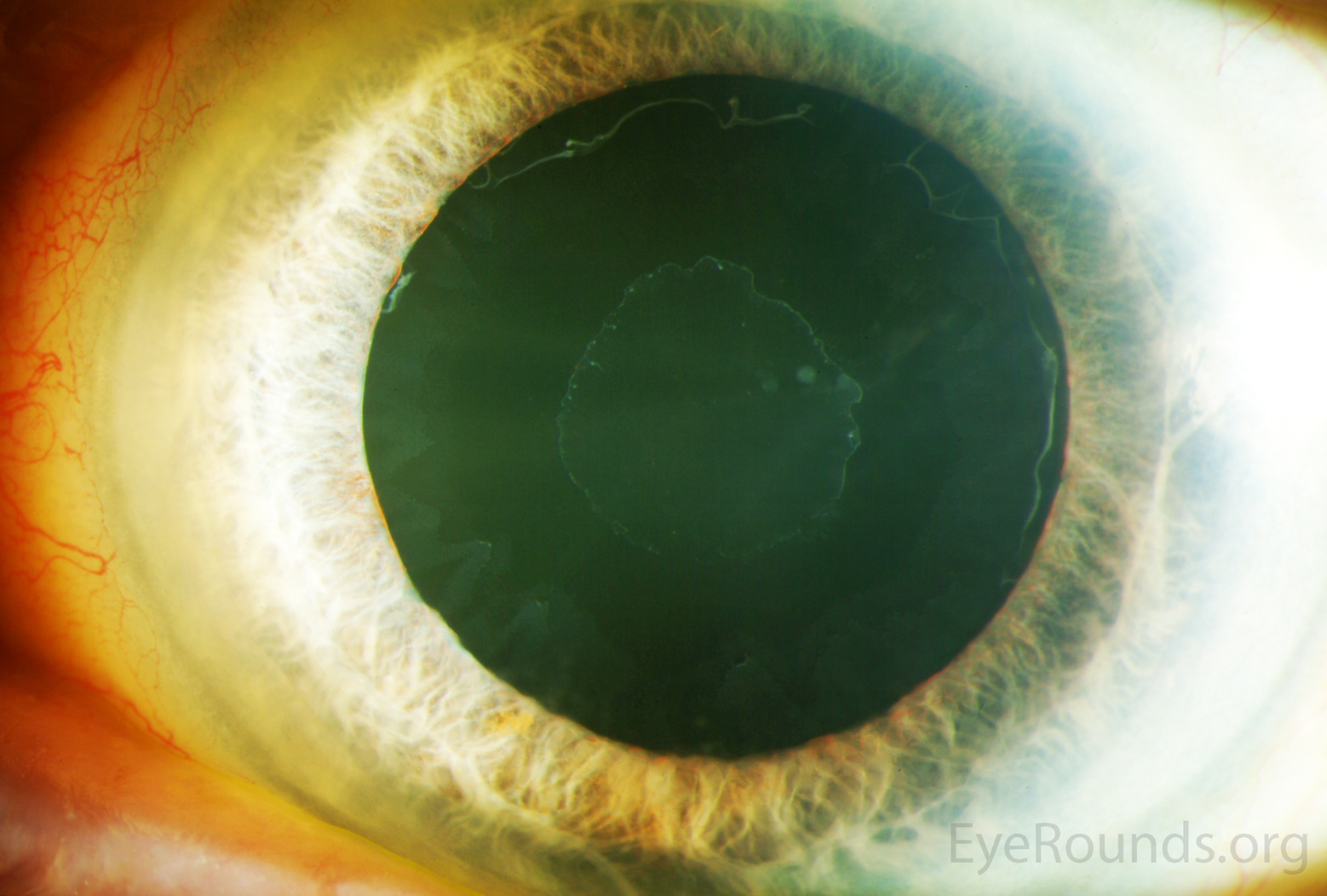
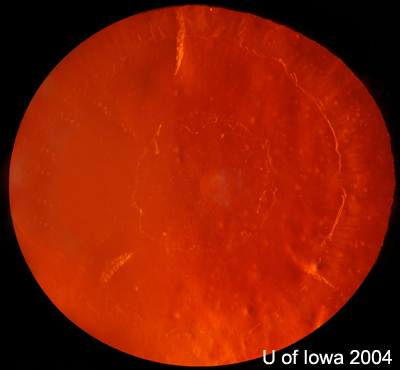

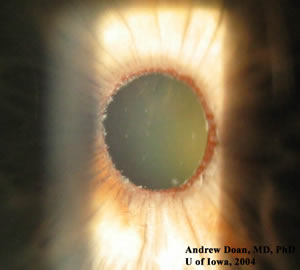
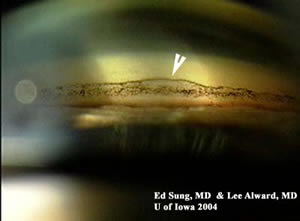
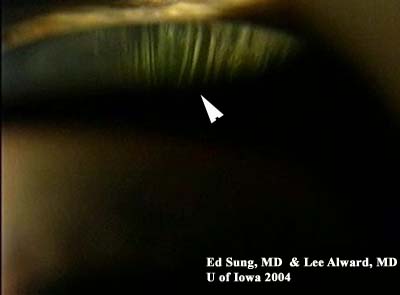
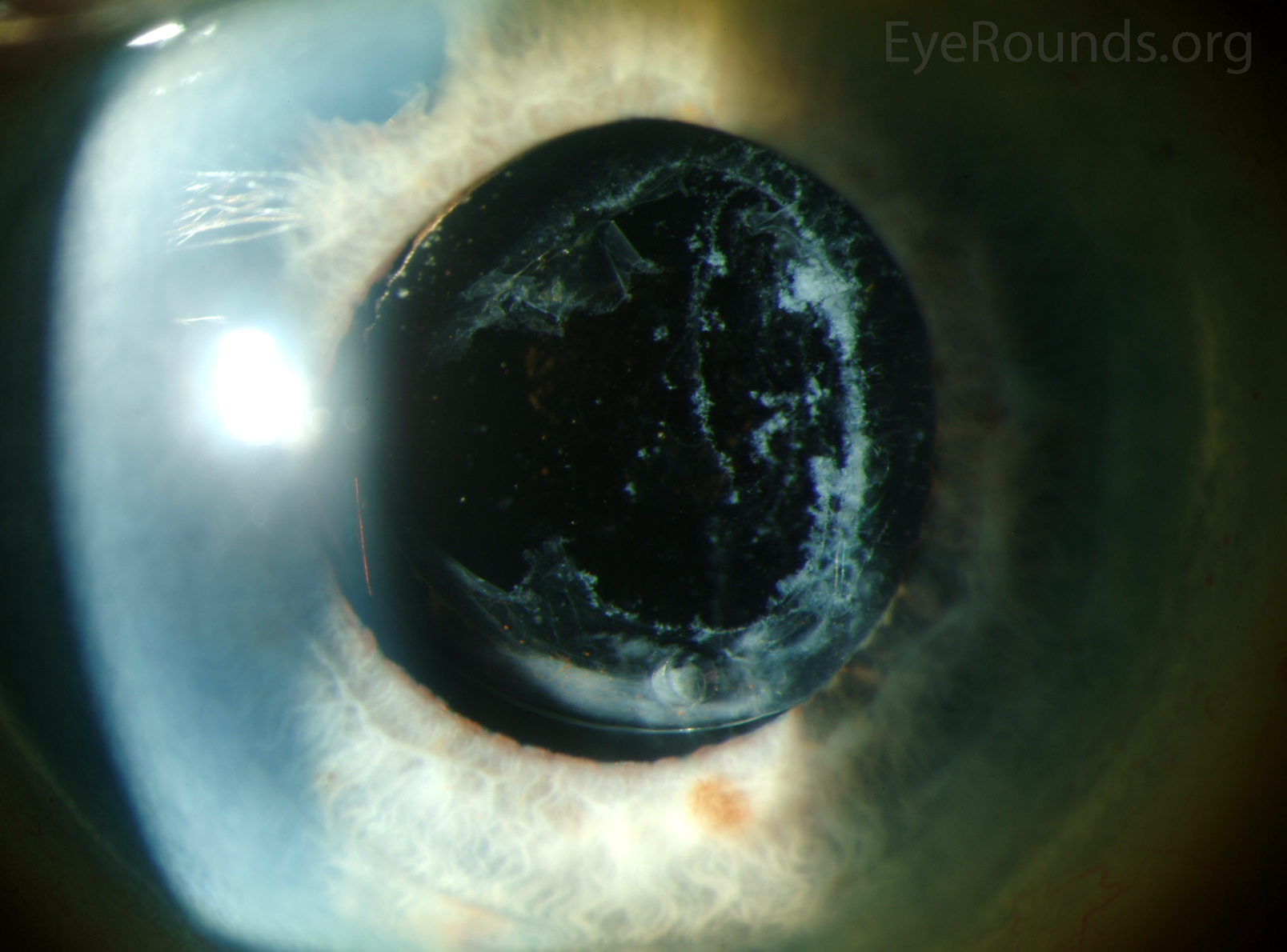
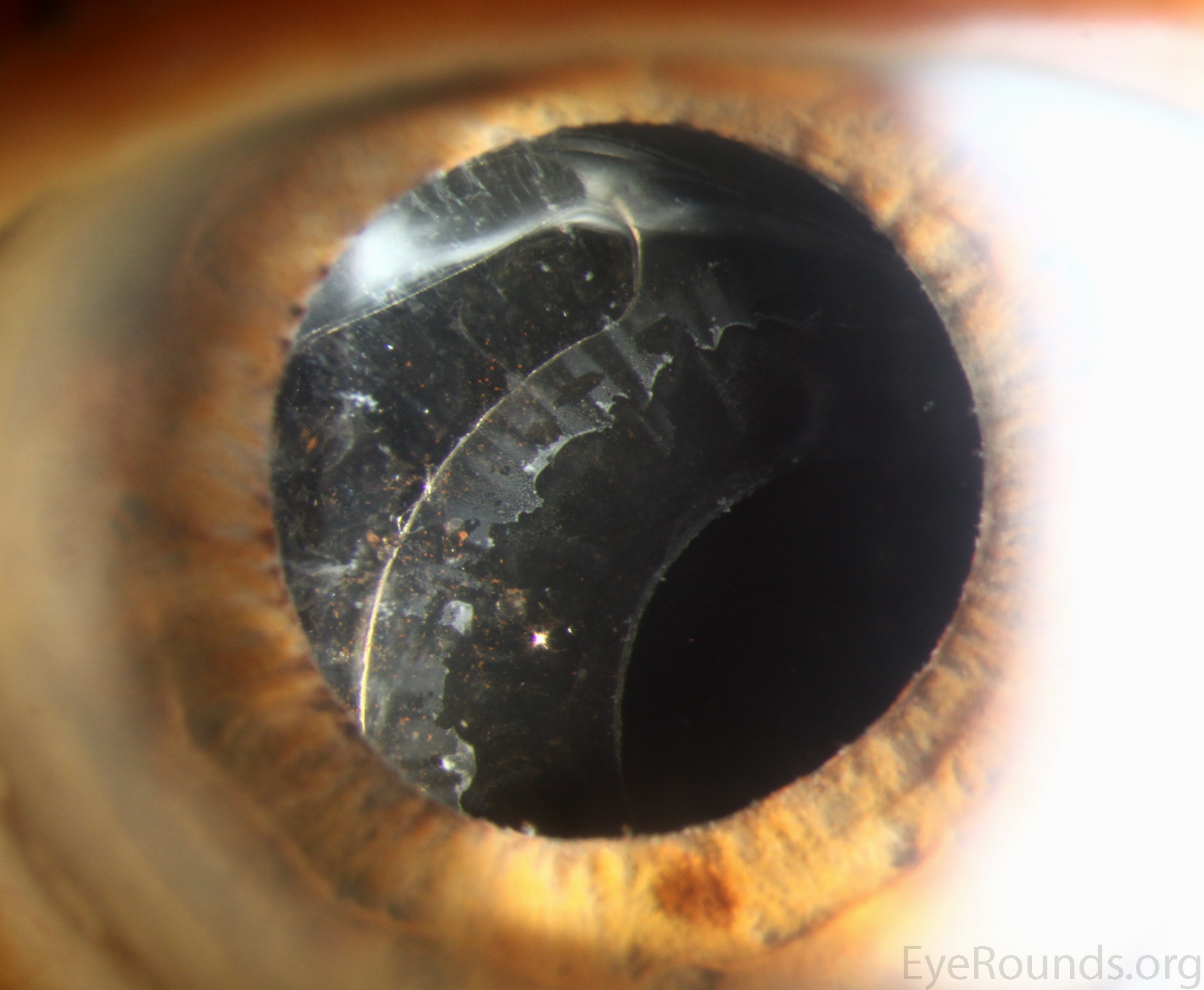

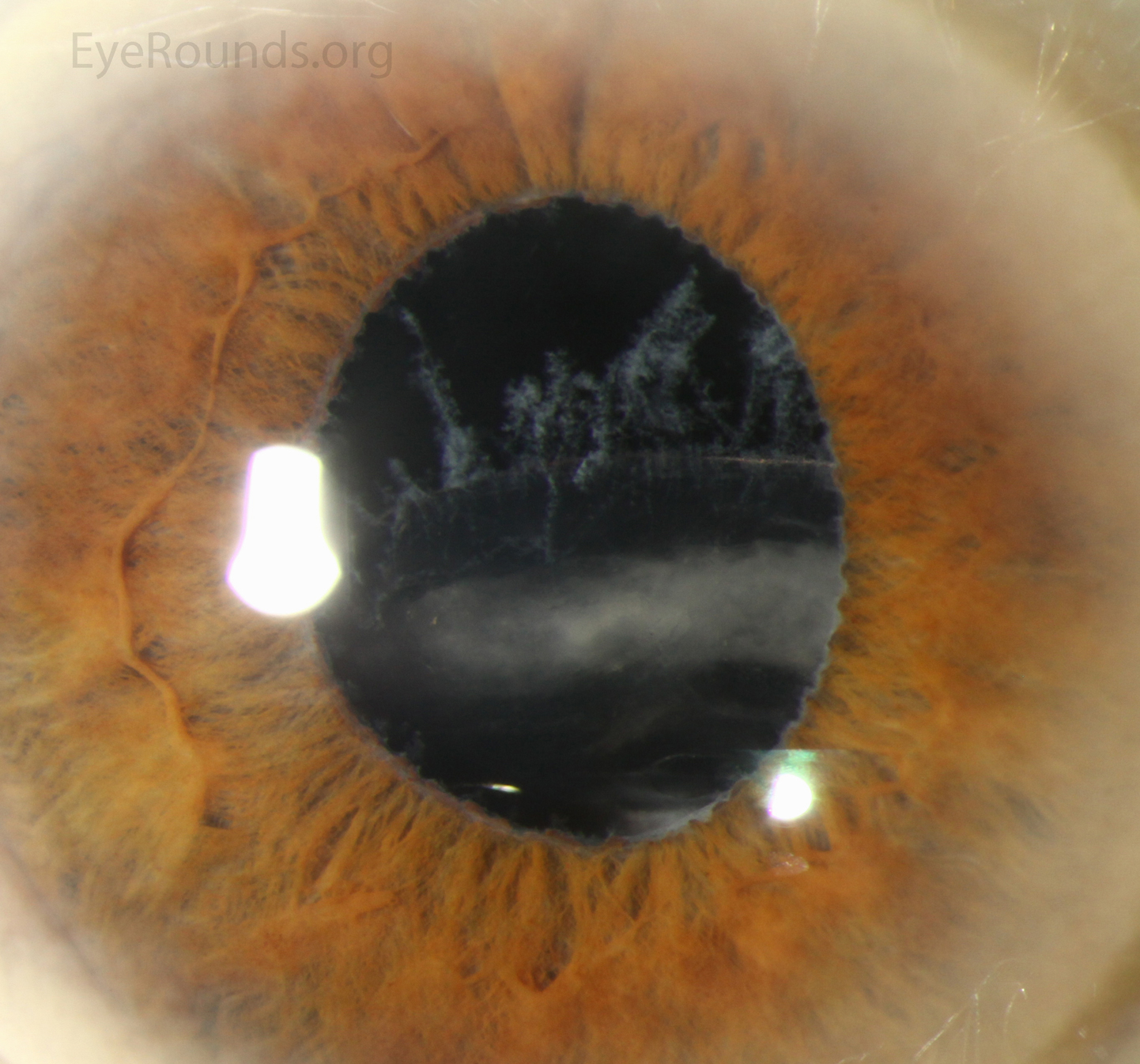
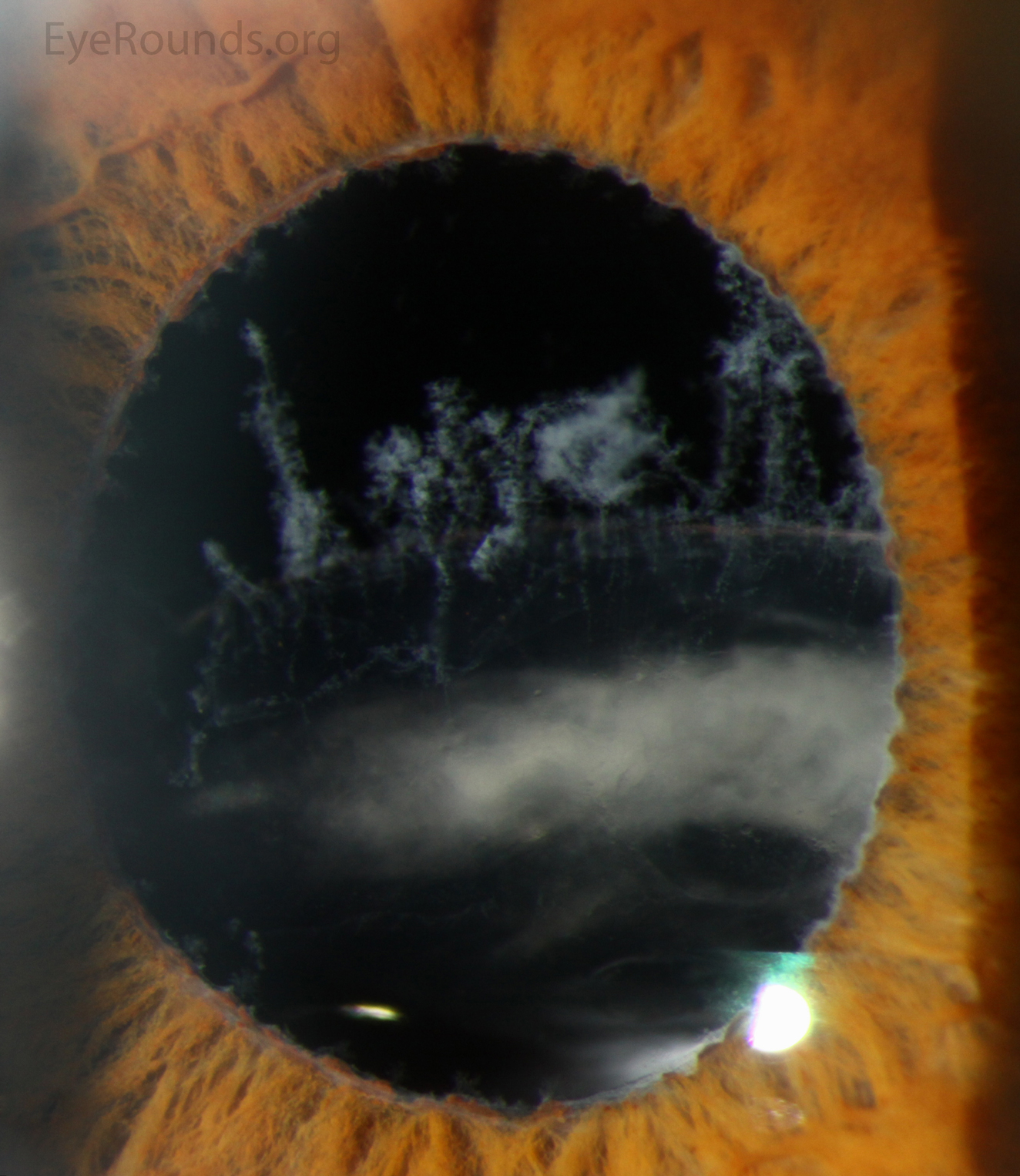


Ophthalmic Atlas Images by EyeRounds.org, The University of Iowa are licensed under a Creative Commons Attribution-NonCommercial-NoDerivs 3.0 Unported License.